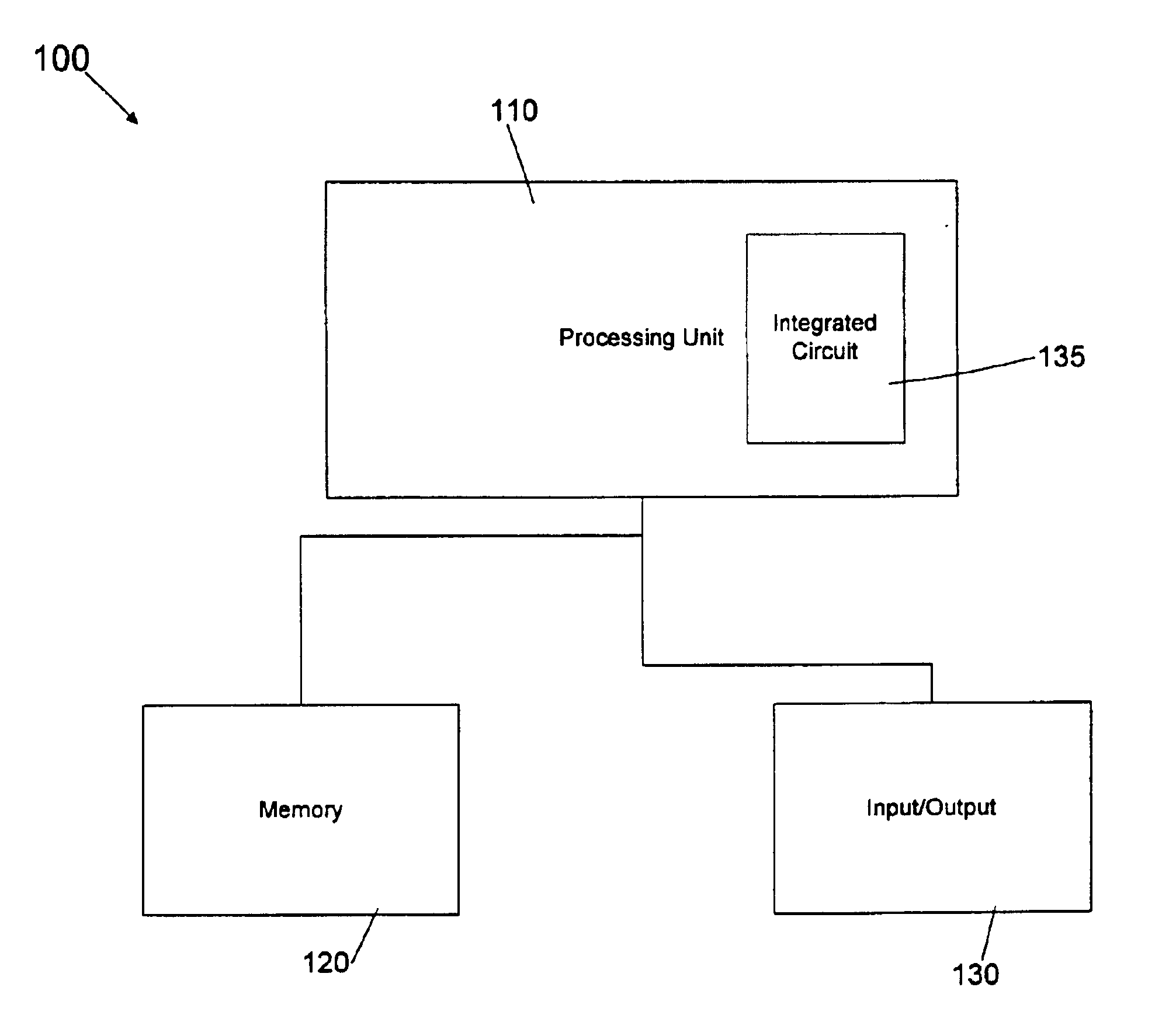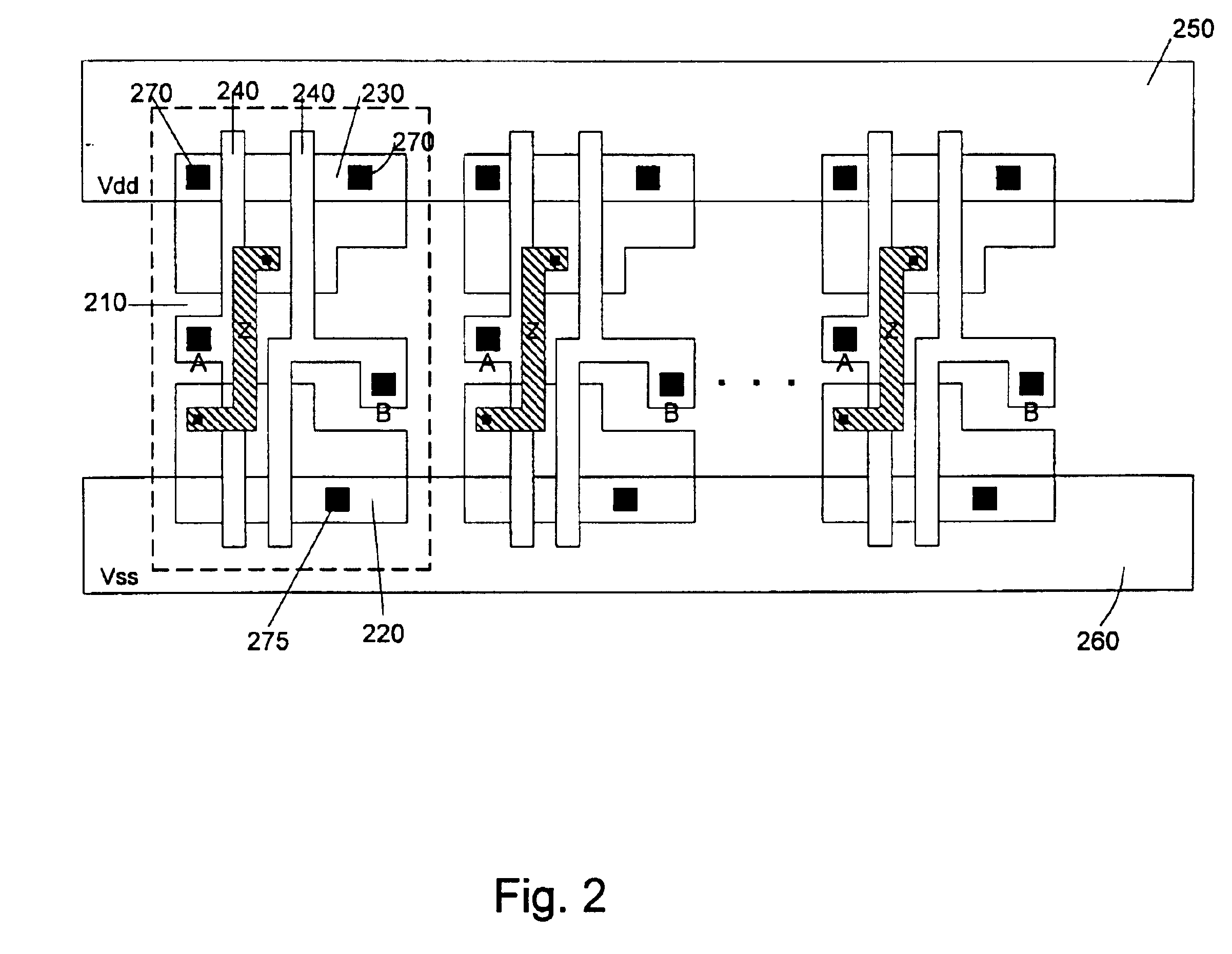Dual-height cell with variable width power rail architecture
a power rail and variable-width technology, applied in the field of cell-based integrated circuits, can solve the problems of insufficient current delivery, low gate density, and low cos
- Summary
- Abstract
- Description
- Claims
- Application Information
AI Technical Summary
Benefits of technology
Problems solved by technology
Method used
Image
Examples
Embodiment Construction
FIG. 1 is a block diagram of a digital system 100 into which an integrated circuit of the present invention may be incorporated. Digital system 100 may include a processing unit 110 coupled to a memory 120 and an input / output device 130. Processing unit 110 includes a standard cell integrated circuit 135 according to the present invention. Other elements (not shown) may also be included in digital system 110. In some embodiments one or more of the elements shown may be excluded. Although integrated circuit 135 is shown as a part of processing unit 110, it may also be included in any or all of the elements of digital system 100. Alternatively, digital system 100 may be entirely formed as a single integrated circuit 135.
Digital system 100 may be used for a variety of applications including, but not limited to, consumer electronics, graphics applications, telecommunications and the like. A personal computer is an example of digital system 100, but it may also be other electronic device...
PUM
 Login to View More
Login to View More Abstract
Description
Claims
Application Information
 Login to View More
Login to View More - R&D
- Intellectual Property
- Life Sciences
- Materials
- Tech Scout
- Unparalleled Data Quality
- Higher Quality Content
- 60% Fewer Hallucinations
Browse by: Latest US Patents, China's latest patents, Technical Efficacy Thesaurus, Application Domain, Technology Topic, Popular Technical Reports.
© 2025 PatSnap. All rights reserved.Legal|Privacy policy|Modern Slavery Act Transparency Statement|Sitemap|About US| Contact US: help@patsnap.com



